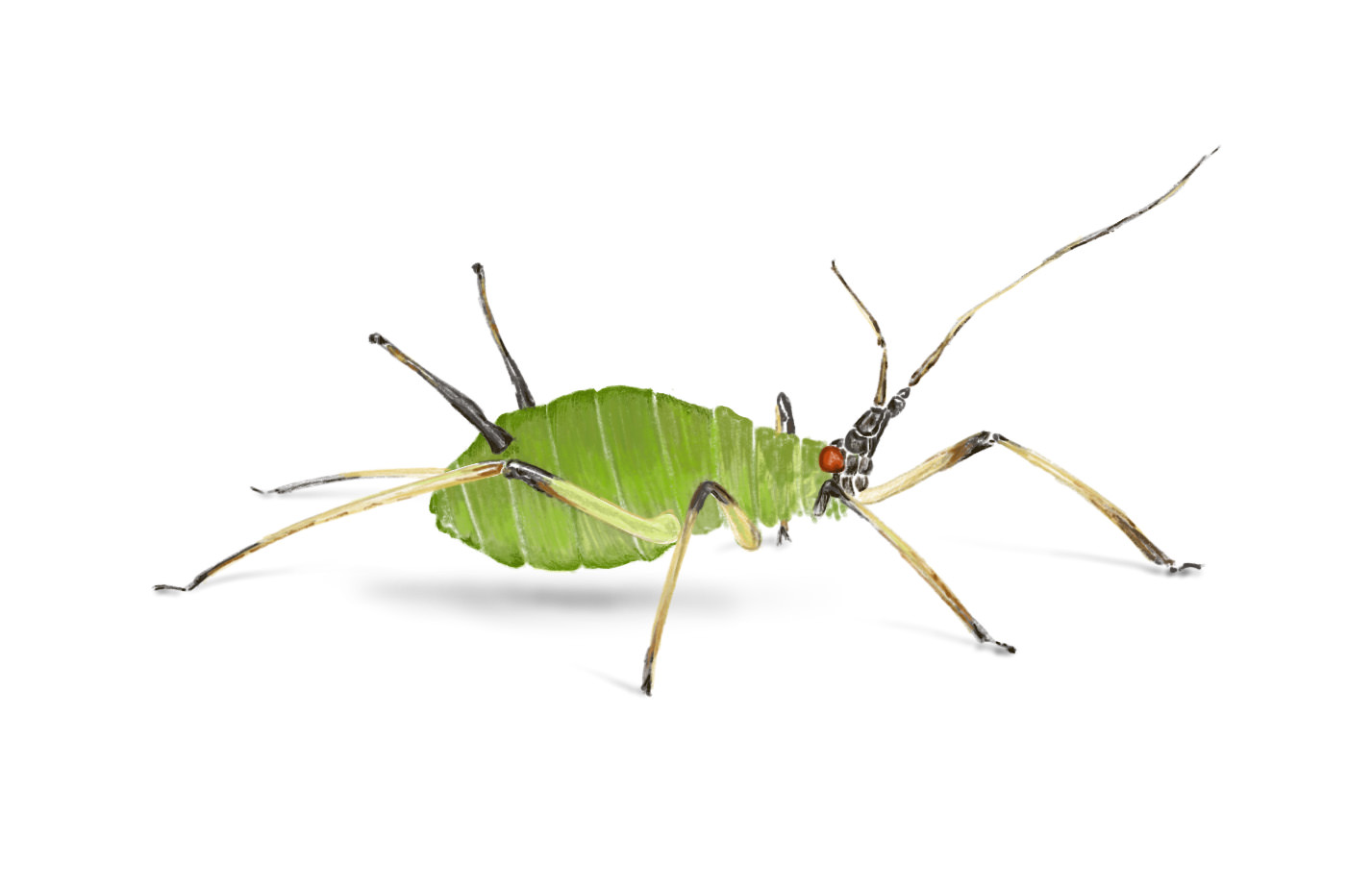BUG OFF!
Combatting aphids in the garden.
Once temperatures increase and new greenery emerges, an army of miniscule garden warriors invades.
Tiny, soft-bodied, winged insects called aphids feed on sweet, supple new growth. In regional gardens, the woolly apple aphid, black cherry aphid, and willow aphid, among others, are found. Though they share the same body shape and difficulty flying (despite having wings), each has different colors and characteristics and is attracted to different plants. And you don’t want any of them in your garden.
“They’re a huge nuisance pest, but they’re a very delicate insect and easy to remove from plants,” explains Wendy Hanson Mazet, plant diagnostician at the University of Nevada Cooperative Extension. “We can’t eliminate them; they’re prolific.”
Little insect, big problem
Tending to swarm in vast numbers on their hosts, aphids eventually suck the nutrients out of plants and trees, leaving them sick, unable to photosynthesize, or completely destroyed. They also easily spread garden diseases if feeding on sick plants and migrating to others.
If you’ve ever felt a light mist while hanging around trees, that likely was aphids. A shiny, sticky substance called honeydew is excreted by the little buggers and often is found coating cars and patios.
For being such tiny insects, they pack a big punch for plants, which often don’t survive an infestation.
Kale infested with aphids may not taste as good, or be as aesthetically pleasing due to the lost nutrients and viscous honeydew. Rose bushes may not produce their usually beautiful blooms when aphids feed on their stalks.
Detection isn’t always easy. Often, they hide on the undersides of leaves. Woolly apple aphids live on tree trunks and branches and can be hard to see.
Curling leaves or a tree appearing to wear a coat of cotton balls are good indications you have an aphid incursion on your hands.

Preventing the pests
Aphids emerge in spring and fall in large numbers but are not fond of hot sun, which gardeners can use to their advantage.
Landscape architect Jana Vanderhaar of Verdant Connections Landscape Architecture says healthy plants can ward off most infestations, so pests are an indication that the plant is unhappy. She encourages gardeners to analyze their gardens’ health regularly. Check to see whether plants are getting too much or not enough water by digging into the soil a few inches and checking for moisture. Make sure soil is nutrient rich by using compost and organic fertilizer.
Take a picture of your plant’s pest, or remove an infested leaf and place it in a sealed container, then bring your sample to a nursery or the master gardeners at the UNCE and let them help you determine what the issue is and how best to treat it without harming your garden.
Battle aphids by adding their natural predators, such as ladybugs, to your garden. Perhaps the best treatment is simply spraying aphids off plants with water mid-morning. Slow to traverse back to their hosts, they’ll likely perish from sun exposure before they can return.
Mazet adds that you should always seek out treatments made for plants at your local nursery, because using homemade remedies can do further damage.
“When people start thinking of using their organic hand soap, that product has never been tested on plants. Don’t assume organic and plant-based products are good for your plant,” Mazet says. “Also, more is not better on plants, especially oils. You put so much time into raising plants, it’s worth it to make sure you’re dealing with aphids in a harm-free manner.”
Freelance writer Natasha Bourlin has (unsuccessfully) gone to war with these pests before, and now she feels well armed for the next battle.
Resources
To contact the University of Nevada Cooperative Extension master gardeners with questions, visit Www.unce.unr.edu/programs/sites/mastergardener/western or email Mastergardeners@unce.unr.edu.
For information about aphids’ natural predators, visit the University of California Agriculture and Natural Resources’ Integrated Pest Management Program at Ipm.ucanr.edu.
Jana Vanderhaar, Verdant Connections Landscape Architecture LLC: Verdantconnections.com


